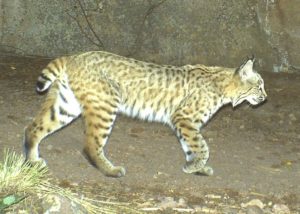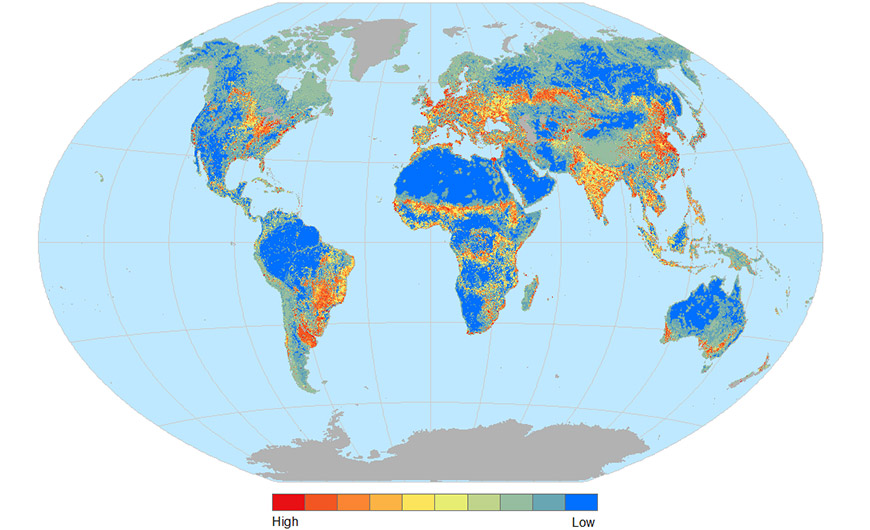
Researchers have long assumed that habitat fragmentation contributes to extinction risk for animals, but until now, they have not been able to measure it for a major group of animals on a global scale. In a first-of-its-kind study, an international research team led by Colorado State University successfully measured habitat fragmentation for over 4,000 species of land-dwelling mammals. Among the findings, researchers discovered that species with more habitat fragmentation are at greater risk of extinction.
Kevin Crooks, the study’s lead author and a professor in CSU’s Department of Fish, Wildlife, and Conservation Biology, said the research has implications for assessing the threat of extinction for mammals and setting priorities for global mammal conservation.
“For the first time in Earth’s history, one species — Homo sapiens, or humans — dominates the globe,” said Crooks. “In contrast to prior eras, we travel and communicate across the entire planet. Unfortunately, the more ‘connected’ we become, non-human life with which we share this planet becomes increasingly disconnected, at their peril.”
High-resolution modeling measures habitat fragmentation
The research team used high-resolution habitat-suitability models to measure the degree of fragmentation for the world’s mammals. Scientists then examined the relationship between habitat fragmentation and extinction risk, as assessed by the International Union for Conservation of Nature Red List, and developed a comprehensive inventory of the global conservation status of animals and plants.
The team also produced global maps, predicting key areas of intact high-quality habitat as well as hotspots of fragmentation for mammals. Habitat models demonstrate that most suitable environments for mammals are located outside of known protected areas.
Urban development, roads, deforestation lead to fragmentation
Human activities such as urban development, roads and deforestation can lead to habitat fragmentation. Fragmentation reduces the total amount of habitat available to wildlife, but also simultaneously isolates the habitat that remains, preventing movement of animals in previously connected landscapes.

In previous research, Crooks and his colleagues found that large carnivores, including mountain lions and bobcats, decline and at times disappear, in highly-fragmented urban areas in the United States.
Habitat fragmentation also intensifies the effects of other agents of global environmental change, including limiting the ability of wildlife to shift locations in response to climate change.
“Habitat fragmentation needs to be addressed urgently, but it is also a manageable global conservation challenge,” Crooks said.
“We hope that this research will provide critical guidance to conservation practitioners and policymakers setting strategic priorities for global mammal conservation. The findings of the study warrant intensified efforts to protect remnant habitat patches, as well as to restore connectivity to fragmented landscapes through conservation tools such as wildlife corridors and habitat linkages.”
The research team includes scientists from Colorado State University’s Warner College of Natural Resources, Conservation Science Partners, The University of Queensland in Australia, and Sapienza University in Italy.
“Quantification of habitat fragmentation reveals extinction risk in terrestrial mammals” was published in the Proceedings of the National Academy of Sciences, or PNAS.

This map shows habitat regions that have been fragmented by human development, while de-emphasizing naturally fragmented regions, for example, from high elevation or interspersed water bodies. Blue denotes regions with low fragmentation, and red denotes regions with high fragmentation. Credit: Kevin Crooks